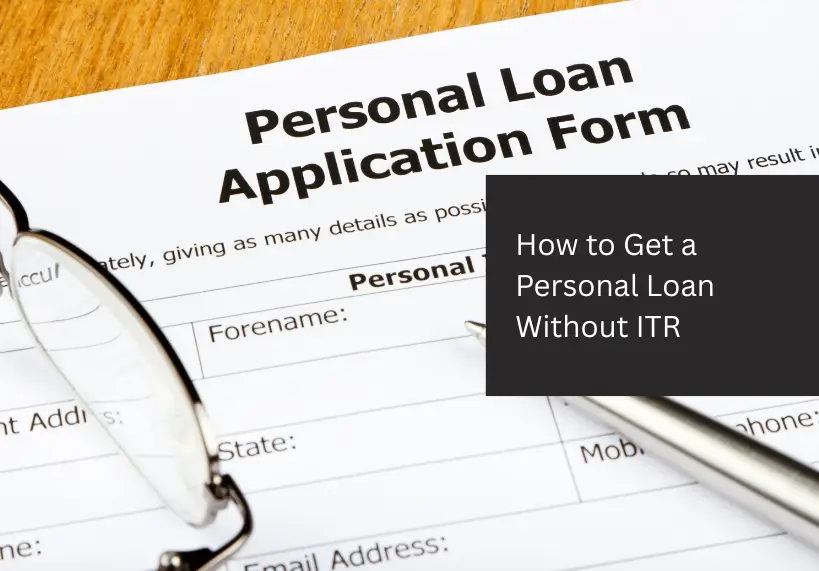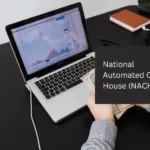
Not having an Income Tax Return (ITR) can seem like a major obstacle when applying for a personal loan. In reality, it’s not a dealbreaker it just changes how you prepare your application.
Lenders use ITR as a reliable proof of income and repayment capacity. When you don’t have it, they look for other evidence such as bank statements, salary slips, invoices, collateral, or a co-applicant.
This guide breaks down everything you need to know to apply confidently for a personal loan without ITR, strengthen your profile, and avoid common mistakes.
Why Lenders Ask for ITR — and What Can Replace It
An Income Tax Return(ITR) is an audited record of income and tax compliance. It helps lenders verify both income stability and creditworthiness.
When you don’t have ITRs to show, lenders substitute it with other forms of verifiable income and financial behavior.
Common replacements for ITR include:
- 6–12 months of bank statements showing consistent salary or business inflows
- Salary slips, Form-16, or employer certificate (for salaried applicants)
- Invoices, client contracts, GST returns, or audited accounts (for self-employed individuals)
- Collateral (FD, gold, or property) or a co-applicant with a stable income
- Good credit score (aim for 700–750+) and a clean repayment record
Understanding this substitution helps you prepare a stronger, better-documented application package.
Alternate Documents Lenders Accept
| Profile Type | Common Substitutes for ITR | Tips |
| Salaried | Salary slips, Form-16, 6 months salary credit in bank | Keep salary credits visible and consistent |
| Self-employed | Business bank statements, invoices, GST returns | Add a CA-certified income declaration if available |
| Freelancers / Gig Workers | Platform payout slips, client retainers, bank credits | Show steady monthly inflows, not just one large payment |
| New to Credit | Collateral, co-applicant, or small-ticket loans | Build repayment history before scaling up |
Step-by-Step Roadmap to Apply Without ITR
1. Check your credit score first
Pull your latest credit report and correct any errors. Scores above 700 show lenders you manage credit responsibly.
2. Gather 6–12 months of bank statements
Highlight consistent inflows (salary, client payments, etc.). Lenders look for regularity more than just large deposits.
3. Assemble alternative proofs
- Salaried: salary slips, employer certificate
- Self-employed: invoices, GST returns, business statements
- Freelancers: client contracts, platform payout history
4. Add a co-applicant or collateral if possible
These reduce lender risk and can unlock better terms.
5. Shortlist lenders that accept alternate documents
NBFCs and fintech platforms are often more flexible than traditional banks.
6. Prepare a short cover note
Briefly explain your income pattern (e.g., “freelance digital consultant with recurring client retainers”). Clarity helps underwriters approve faster.
7. Run EMI scenarios before applying
Use a Personal Loan EMI Calculator to ensure affordability.
8. Complete your KYC
Mandatory documents include PAN, Aadhaar, address proof, and a canceled cheque for account verification.
Scenario-Wise Approach
1. Salaried (No ITR Available)
If you missed filing your ITR or your employer handles deductions, provide:
- Latest 3–6 months’ salary slips
- Bank statement showing salary credits
- Employer certificate confirming employment and salary
Tip: A steady job history and a 700+ credit score can often substitute for ITR.
2. Self-Employed / Business Owner
For business owners or consultants without ITR:
- Submit 12 months’ business bank statements
- Attach invoices and recurring client contracts
- Add GST returns or an accountant’s statement if available
Example: A 2-year-old catering business showing consistent monthly turnover of ₹1.5–₹2 lakh through GST filings and client receipts can qualify for an unsecured loan – even without ITR – if the cash flow is stable.
3. Freelancers / Gig Workers
Freelancers can use:
- Platform payout slips (e.g., Upwork, Swiggy, UrbanClap)
- Client retainers or recurring projects
- Bank credits that show steady inflows
Lenders value consistency over one-off big contracts.
4. New to Credit or First-Time Borrowers
If you have no ITR and no credit history:
- Start with smaller, secured credit (FD-backed loan or credit card)
- Repay on time for 6–12 months
- Then apply for an unsecured loan
Building credit behavior first greatly improves your future eligibility.
Costs, Trade-offs, and Risks to Avoid
Applying for a personal loan without ITR is feasible but expect some trade-offs:
- Higher interest rates and processing fees: Lenders price at higher risk.
- Lower loan amounts or shorter tenures: To limit exposure.
- Collateral risk: If you opt for a secured loan, default may lead to asset forfeiture.
- Deeper scrutiny: Expect detailed questions about cash inflows and business operations.
Avoid these red flags:
- Unexplained large cash deposits
- Applying to multiple lenders simultaneously
- Accepting offers with opaque or unusually high charges
Smart Ways to Improve Approval Odds
- Organize your documents clearly. Label bank inflows with invoice numbers or employer names.
- Offer partial collateral (FD, gold). It can lower interest rates.
- Add a co-applicant with a stable income to enhance eligibility.
- Leverage your banking relationship. If you’ve held an account for years, your existing lender may offer pre-approved, minimal-doc options.
- Be transparent. A concise, honest income summary speeds up underwriting.
Pre-Application Checklist
Before you apply, make sure you have:
- Latest credit report (700+ score preferred)
- 6–12 months of bank statements (highlight inflows)
- Salary slips, invoices, or GST returns (as applicable)
- PAN, Aadhaar, address proof, and canceled cheque
- Optional: co-applicant or collateral details
- Shortlist of 2–3 lenders offering alternate-proof options
- EMI calculation for your chosen loan amount
Mini Example – Realistic Case
Profile: Freelancer graphic designer, ₹80,000 monthly income, no ITR
Docs submitted: 12-month bank statement + client retainers + Aadhaar + PAN
Loan type: ₹1.5 lakh personal loan via NBFC, 18% p.a., 18-month tenure
Outcome: Approved within 48 hours with a co-applicant (sister with salaried job).
This demonstrates that even without ITR, consistent, verifiable income and a co-applicant can make your application strong enough for approval.
FAQs
Q1. Can I get a personal loan without ITR?
Yes, you can – but you must provide alternate evidence like salary slips, bank statements, invoices, or collateral. Lenders verify repayment capacity through these documents.
Q2. Is the interest rate higher if I don’t have ITR?
Typically yes. Expect slightly higher rates since lenders perceive more risk without formal income proof.
Q3. What if I have no income proof at all?
Completely zero proof is unlikely to be approved. Lenders require some verifiable inflow bank credits, collateral, or a co-applicant.
Q4. How long should my business be running to qualify?
Most lenders prefer at least 2 years of consistent operations, but steady income inflows can offset shorter business history.
Q5. Is a secured loan better in this case?
Yes – secured loans reduce documentation requirements and generally come with better interest rates.








